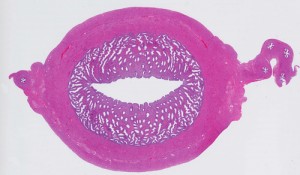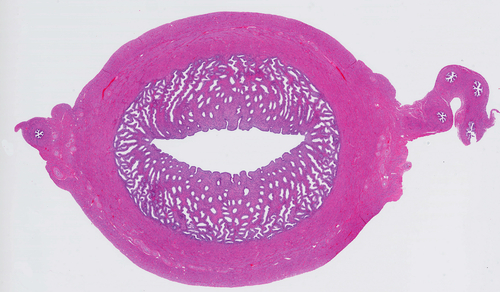 In a recent study entitled “A Phase 2 Trial of Radiation Therapy With Concurrent Paclitaxel Chemotherapy After Surgery in Patients With High-Risk Endometrial Cancer: A Korean Gynecologic Oncology Group Study” and published in the International Journal of Radiation Oncology • Biology • Physics, shows that radiation therapy with concurrent paclitaxel chemotherapy following surgery is an effective treatment for patients with high-risk endometrial cancer.
In a recent study entitled “A Phase 2 Trial of Radiation Therapy With Concurrent Paclitaxel Chemotherapy After Surgery in Patients With High-Risk Endometrial Cancer: A Korean Gynecologic Oncology Group Study” and published in the International Journal of Radiation Oncology • Biology • Physics, shows that radiation therapy with concurrent paclitaxel chemotherapy following surgery is an effective treatment for patients with high-risk endometrial cancer.
Endometrial cancer is the most common gynecologic malignancy, and surgery is usually the common treatment for patients with early-stage disease.
However, patients who suffer from advanced endometrial cancer have higher probabilities of local or distant recurrence, and treatment for these patients include both radiation therapy and chemotherapy after surgery.
From January 2006 to March 2008, researchers followed 57 patients between 20 and 80 years of age, from 20 institutions in Korea, to evaluate the efficacy and safety of concurrent chemoradiation with weekly paclitaxel (a mitotic inhibitor used in cancer chemotherapy) in patients with stage III and IV endometrial cancer, according to the International Federation of Gynecology and Obstetrics (FIGO).
Patients received a total dose of 45.0 to 50.4 Gy of external pelvic radiation therapy and 60 mg/m2 of paclitaxel intravenously for three hours, once a week, for six weeks. Both radiation therapy and chemotherapy were initiated within six weeks of surgery, with radiation therapy beginning either two days before or two days after the first chemotherapy treatment.
[adrotate group=”1″]
The results showed that from the total patient cohort, 21.1% had FIGO stage IIIA disease, 70.1% had FIGO stage IIIC disease and 8.8% had FIGO stage IV disease.
Additionally, 24.6% of patients had grade 1 tumors, 47.3% had grade 2 tumors, and 28.1% had grade 3 tumors.
The majority of toxicities observed throughout treatment were mainly of hematological nature, such as decreased white blood cells (16.7%) and decreased neutrophils (11.2%).
Disease recurrence occurred in 36.5% of the patients, with 34.6% experiencing extrapelvic recurrence and 1.9% experiencing intrapelvic recurrence in the vaginal vault.
“There is a lack of clear evidence on the best adjuvant treatment plan for patients with advanced endometrial cancer. There is growing evidence that chemotherapy should be administered to patients with advanced disease in addition to radiation therapy. This study shows that concomitant radiation therapy and weekly paclitaxel chemotherapy is a reasonable treatment option for patients with advanced endometrial cancer that can reduce toxicity and reduce pelvic recurrence. These favorable results should be further evaluated in a larger, prospective, randomized, controlled study to validate this treatment approach,” Jae-Hoon Kim, MD, PhD, a co-author of the study, head of the department of obstetrics and gynecology at Gangnam Severance Hospital in Seoul, South Korea, and a professor in the Department of Obstetrics and Gynecology at Yonsei University College of Medicine in Seoul, South Korea, said in an American Society for Radiation Oncology (ASTRO) press release.


